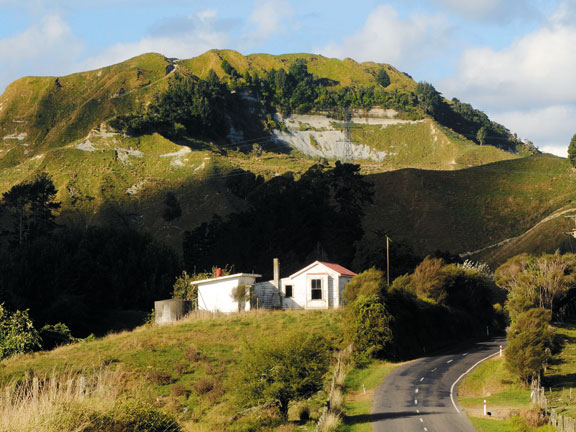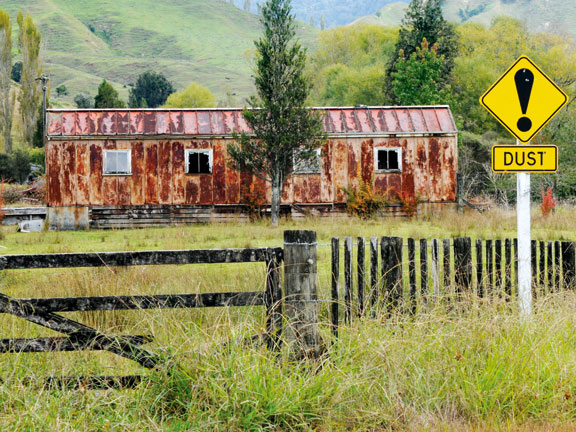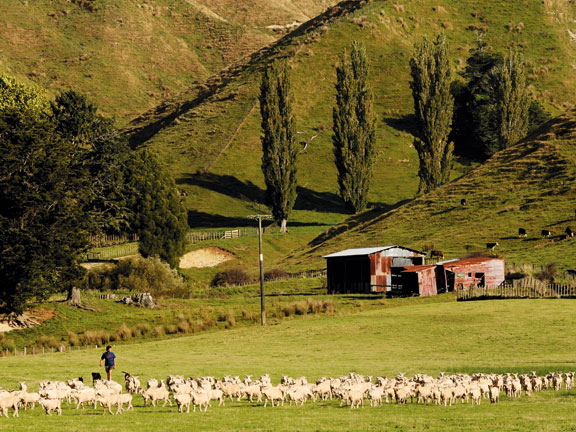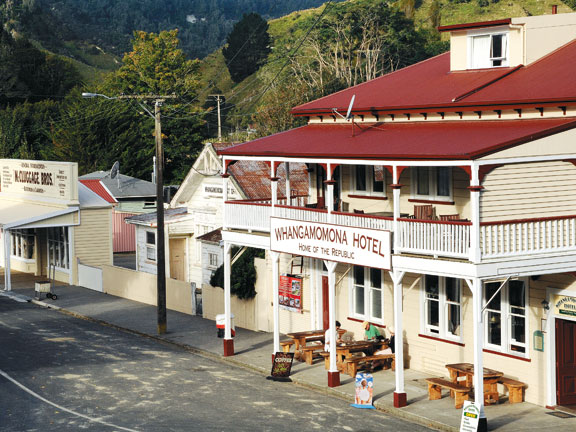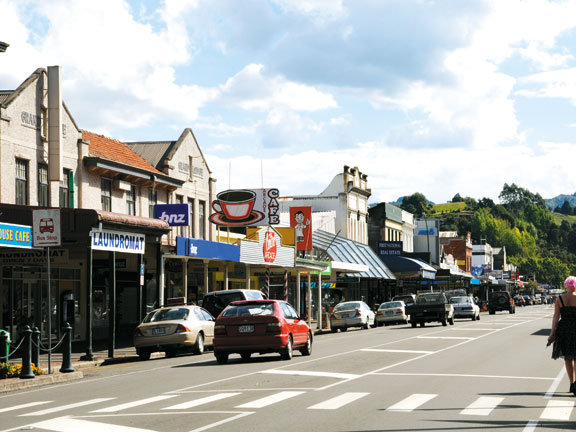The chefs at Tandoori Bite come directly from India and make delicious spicy dahls, succulent prawn curries and creamy saag, so it's sad for them that half the clients order steak and chips.
This is Taumarunui, after all — a sleepy centre for generational farming families. The shops stretch along one side of the main road and the railway along the other, making the heart of town a long straggle.
Taumarunui and Stratford mark either end of Highway 43, 150 kilometres of backcountry road that twists and turns through valleys and up razor ridges.
Heading west out of Taumarunui, the road follows a valley carved over millions of years by the rushing waters of the Whanganui River. The river makes this part of the journey memorable and we stop to marvel at its sparkling summer beauty. It's young here, dashing over stones; always in a hurry. There are spots along the riverside where free-camping is still OK and where people fish for trout, and swim in deep clear pools.
As we follow the river it grows, gaining water and depth until it becomes deep, green, and purposeful. The road and river part company at Aukopae Landing, a straight piece of riverbank that was once the last landing place for steam-driven paddleboats chugging up from Wanganui bringing settlers, supplies and livestock. All that remains of their cottages are lone chimneys standing in an explosion of pink naked-ladies. Apple trees, taller than the chimneys, keep on fruiting.
We make a 10-kilometre detour to Ohura, once a thriving coal, mill, and farming town with a population of 3000 but now a ghost of its previous self with just 167 people. Its other big business, Ohura State Prison, a white collar penitentiary with 100 cells, closed in 2007, but was bought by an optimist as a retirement project. It's now funky accommodation and one can sleep in a comfortable cell, complete with metal door, for just $18 a night.
The shops that edge the wide main street are almost all closed indefinitely, though many have artfully arranged treasures in their windows.
Corrugated iron roofs are 20 shades of rust, the wooden façades have peeling paint with printed echoes of past occupants (Firestone, Williams & Kettle), and cowboy-style overhangs keep ghost customers dry on rainy days. Cue the rolling tumble weed at high noon.
Moki Tunnel is the next big thing on Highway 43 and a passing tourist takes wild enjoyment from it: his companion drives while he lies on his back on the roof of the car screaming through its entire 180 metres. The Moki Hill saddle was a swine in which cars got bogged to their axles, so the Stratford Council built the tunnel in 1936 using a steam-driven compressor to power two jackhammers.
From here to Whangamomona, big country gets bigger. This is sheep territory with towering hills, some with raw escarpments where the land simply slipped away. The sheep seem tiny. We pass a farmer moving some of the woolly creatures, whistling to dogs and shouting occasionally as the sheep bunch in an apparently confusing gateway.
Whangamomona has been a feisty little town since it was first settled and, in 1989 when bureaucrats in Wellington tried to redraw boundaries and put Whangamomona into the King Country instead of the Stratford region, hell broke loose. Whanga' looks west and feels more akin to Taranaki than the King Country so, in disgruntled fury, the town abandoned central government, declared it a republic, and elected a president.
All republics need a Republic Day and Whanga' celebrates this every second year on the last Saturday of January with sheep races, wood chopping, horse shoeing, possum skinning, eel catching, belly dancing and other culturally appropriate, or not, activities. Thousands converge on the town by horse, car, and bus, and a wild time is had.
When we arrive the heritage hotel basks in sun and groups quietly cluster around tables chatting over beer. It's not long before we join them, relaxing into the quiet air of this 60-people, 12-horse town.
During the night, rain on corrugated iron is a cosy sound for sleep and by morning, Whangamomona is shiny and dripping. The road dives straight into bush. It's breathing, exhaling mist that swirls and changes shape. I revel in absolute green; fern fronds with dripping points, skeins of hanging moss woven with thousands of diamond drops and giant trees that thrust their crowns above the others.
The Whangamomona, Pohokura and Strathmore Saddles are a breeze to cross now, on a sealed road, but a century ago it took five days for pack horses to bring supplies to settlers. They are still a barrier, marking the division between rolling, fecund, and tidy Taranaki, and the expansive, steep, and scraggy sheep country we have driven through.
Stratford, at the Taranaki end of Highway 43, in the heart of dairy country, is busy and bustling. Big milk payouts bring prosperity and fancy cars, and rosy-cheeked women with generous dairy-product bottoms fill carts at supermarkets, browse the racks at frock shops, and meet for ladies' lunches.
If Taumarunui was in dairy country instead of sheep country it, too, might be like this. Such is the fate of farming.
Highway 43 is a journey that tells of dust and rust and days past, as it curls through an elemental landscape, forested and misty, or stripped bare with just a skin of grass, patterned with daisy-white dots of distant sheep.
Feel free to make a comment or ask us a question about this story on the MCD  page.
For the latest reviews, subscribe to our Motorhomes, Caravans & Destinations magazine here.
page.
For the latest reviews, subscribe to our Motorhomes, Caravans & Destinations magazine here.
 page.
For the latest reviews, subscribe to our Motorhomes, Caravans & Destinations magazine here.
page.
For the latest reviews, subscribe to our Motorhomes, Caravans & Destinations magazine here. 
